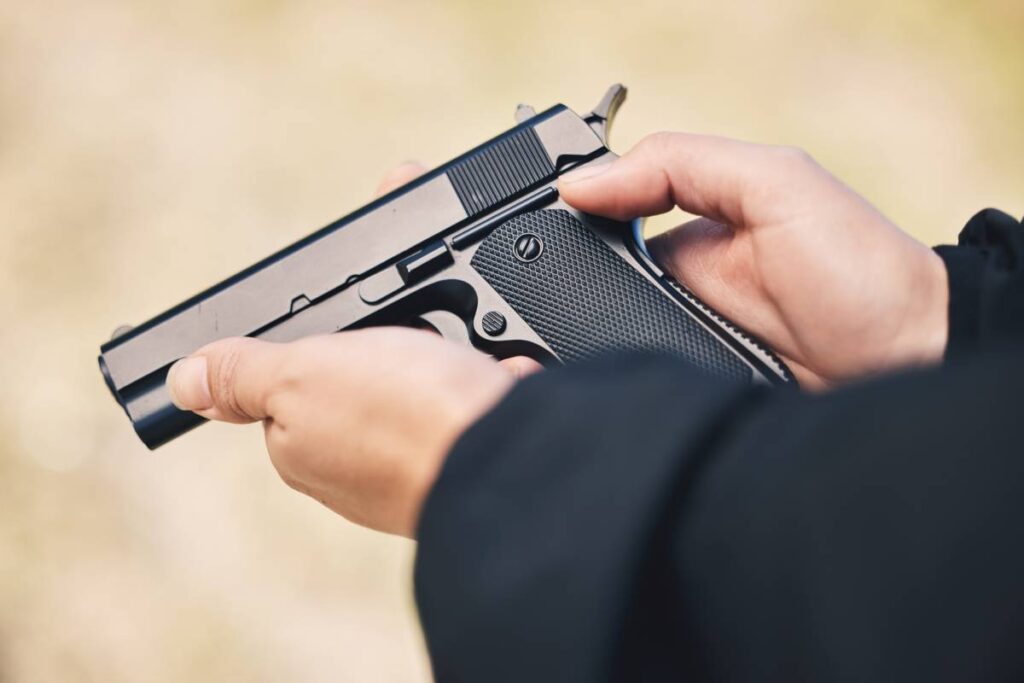
Summary – Firearms Manufacturing Compliance Made Simple:
- Get an FFL before manufacturing.
- Use correct serial numbers on all firearms.
- Maintain accurate A&D records.
- Submit all required ATF forms.
- Use firearms manufacturing software to reduce errors and stay audit-ready.
Follow these steps to stay compliant, avoid penalties, and focus on building high-quality weapons with confidence.
In the highly regulated world of firearms manufacturing, staying compliant isn’t just a best practice—it’s a legal necessity. For private gun manufacturers, understanding and adhering to firearms manufacturing compliance standards is crucial to avoid steep penalties, license revocations, and even criminal charges.
This blog will walk you through the essential laws and regulations governing firearms manufacturing, the role of the Bureau of Alcohol, Tobacco, Firearms and Explosives (ATF), and how firearms manufacturing software can help you stay compliant every step of the way.
Understanding the Regulatory Landscape
Firearms manufacturing in the United States is governed by a complex web of federal laws, most notably:
These laws establish a framework that all manufacturers must follow, including serialization, recordkeeping, and licensing.
Federal Firearms License (FFL)
Before manufacturing even a single weapon, private firearm makers must obtain a Federal Firearms License (FFL) from the ATF. This license categorizes you as a manufacturer and brings with it strict oversight requirements.
FFL compliance is an ongoing obligation. You must maintain detailed records, undergo regular ATF inspections, and submit relevant ATF forms.
The Role of the ATF
The Bureau of Alcohol, Tobacco, Firearms and Explosives (ATF) plays a central role in enforcing firearm compliance. They regulate and monitor manufacturers through:
- ATF Forms: Required for everything from licensing to transferring ownership.
- ATF Inspections: Routine inspections ensure that manufacturers are maintaining compliance with all laws and regulations.
Core Compliance Rules for Firearm Manufacturers
Manufacturers must follow a set of core rules to ensure compliant firearms manufacturing. These include:
1. Serial Number Requirements
Every firearm manufactured must be marked with a unique serial number. This serial number must be engraved in accordance with ATF guidelines regarding depth, font size, and location.
Failure to properly serialize a weapon is a major violation and can result in serious legal consequences.
2. Accurate Recordkeeping
Maintaining an Acquisition and Disposition (A&D) Record is mandatory. This ledger tracks each firearm as it enters and leaves your inventory. Information must be accurate, timely, and available for ATF inspection.
Essential details include:
- Manufacturer, model, and caliber
- Serial number
- Dates and methods of acquisition and disposition
3. Proper Use of ATF Forms
Depending on your activity, different ATF forms must be submitted:
- ATF Form 1: Application to make and register a firearm (usually used by individuals)
- ATF Form 2: Notice of firearms manufactured or imported
- ATF Form 4473: Required for sales to non-licensees
4. National Firearms Act (NFA) Compliance
If you manufacture weapons regulated under the National Firearms Act, such as short-barreled rifles or suppressors, additional rules apply. These include special tax stamps, registration, and restricted transfers.
How Firearms Manufacturing Software Can Help

Manual recordkeeping can lead to costly mistakes. That’s why more gun manufacturers are turning to firearms manufacturing software to automate compliance tasks.
Key Benefits Include:
- Automated A&D Logs: Real-time data entry and error checks help maintain accuracy
- ATF Form Integration: Simplifies the process of completing and submitting forms
- Inventory Management: Tracks serialized parts, raw materials, and finished goods
- Audit Readiness: Easily retrieve records for ATF inspections
This kind of software reduces the risk of human error, saves time, and ensures compliance with ever-evolving firearm manufacturing rules.
Best Practices for Maintaining Compliance
Compliant firearms manufacturing requires more than just following rules. It requires a culture of compliance across your organization.
Build a Compliance-First Culture
- Train Your Team: Make sure all staff understand firearm compliance requirements
- Conduct Internal Audits: Regular self-audits can catch problems before the ATF does
- Document Everything: Keep detailed records of policies, procedures, and training
Stay Up to Date
Laws and regulations change frequently. Subscribe to ATF newsletters, attend industry events, and consult with compliance experts to stay informed.
What Happens If You’re Not Compliant?
The consequences for noncompliance can be severe. Penalties may include:
- Fines: Substantial financial penalties for each violation
- License Revocation: Losing your FFL ends your ability to manufacture legally
- Criminal Charges: In serious cases, noncompliance can lead to federal prosecution
Avoiding these outcomes requires diligence, investment in proper tools, and an ongoing commitment to compliance.
The Bottom Line: Ensure Compliance and Focus on Craftsmanship
For private gun manufacturers, compliant firearms manufacturing is just as important as precision engineering. Understanding the laws, maintaining proper records, and investing in tools like firearms manufacturing software can protect your business and support your growth.
By staying ahead of changing regulations and embracing a culture of compliance, you can continue doing what you love—crafting high-quality firearms—while operating with confidence and integrity.
